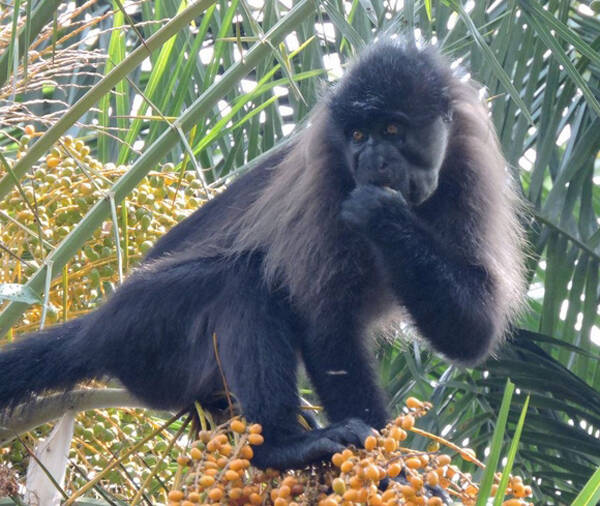Lophocebus albigena
IUCN
LCBasic Information
Scientific classification
- name:Lophocebus albigena
- Scientific Name:Lophocebus albigena,Grey-cheeked Mangabey, White-cheeked white-maned monkey
- Outline:Primates
- Family:Cercopithecidae
Vital signs
- length:43-73cm
- Weight:4-10kg
- lifetime:No verification information
Feature
The eyelids are white and have a prominent crest.
Distribution and Habitat
Distributed in Burundi, Cameroon, Central African Republic, Congo, Democratic Republic of Congo, Equatorial Guinea, Gabon, Rwanda, United Republic of Tanzania, Uganda.
Inhabits Africa, from plains to low hills near water sources, secluded and food-rich areas. Prefers to live in forest and shrub areas, especially valleys with streams and rivers, and wide areas with vines and green trees, which are often the most ideal places for monkeys to live.
Appearance
There are three subspecies of the gray-cheeked white-maned monkey. The male head and body length is 54-73 cm, and the female head and body length is 43-62 cm; the tail length is 73-100 cm; the male weighs 6-10 kg, and the female weighs 4-7 kg. It is a large arboreal monkey with long limbs and an erect tail that is longer than its body. Their eyelids are white and they have a prominent crest, hence the name. The cheeks are usually gray and the face is black. The whole body is almost black hair, and the shoulders are usually covered with long light brown to brown hair. The color of the shoulders varies and differs between subspecies, ranging from gray to brown. The abdomen is slightly lighter. The snout is longer, and the thumb can be opposite to the other four fingers. The tail is not entangled and is usually erected and bent above the back.
Females are slightly smaller and more slender than males. Males have special air sacs in their throats that can loudly amplify and clearly annou
Details
Grey-cheeked Mangabey (scientific name: Lophocebus albigena) is also known as Grey-cheeked Mangabey in English. There are three subspecies.

Grey-cheeked Mangabey live in groups, usually consisting of 15 members in a family group, led by a male mangabey. There is a strict hierarchy within the close-knit group. They often like to climb vines and trees, and like to find cliffs and caves. Their range of activities is very large. When the monkeys move collectively, there will be a "sentinel" standing on a high place to keep watch. If they find any abnormal situation, they will send a signal to call the monkeys to move quickly. If the situation is urgent, they will quickly disappear without a trace with their skilled skills in climbing cliffs and crossing dangerous places. The monkeys will comb each other's hair and touch each other. They are active during the day and are most active in the early morning and dusk. On the surface, they usually move slowly and leisurely. But in fact, they are agile, with fast speed and reaction.
Listed in the 2008 Red List of Endangered Species of the World Conservation Union (IUCN) ver 3.1 - Least Concern (LC).
Protect wild animals and eliminate game.
Maintaining ecological balance is everyone's responsibility!








